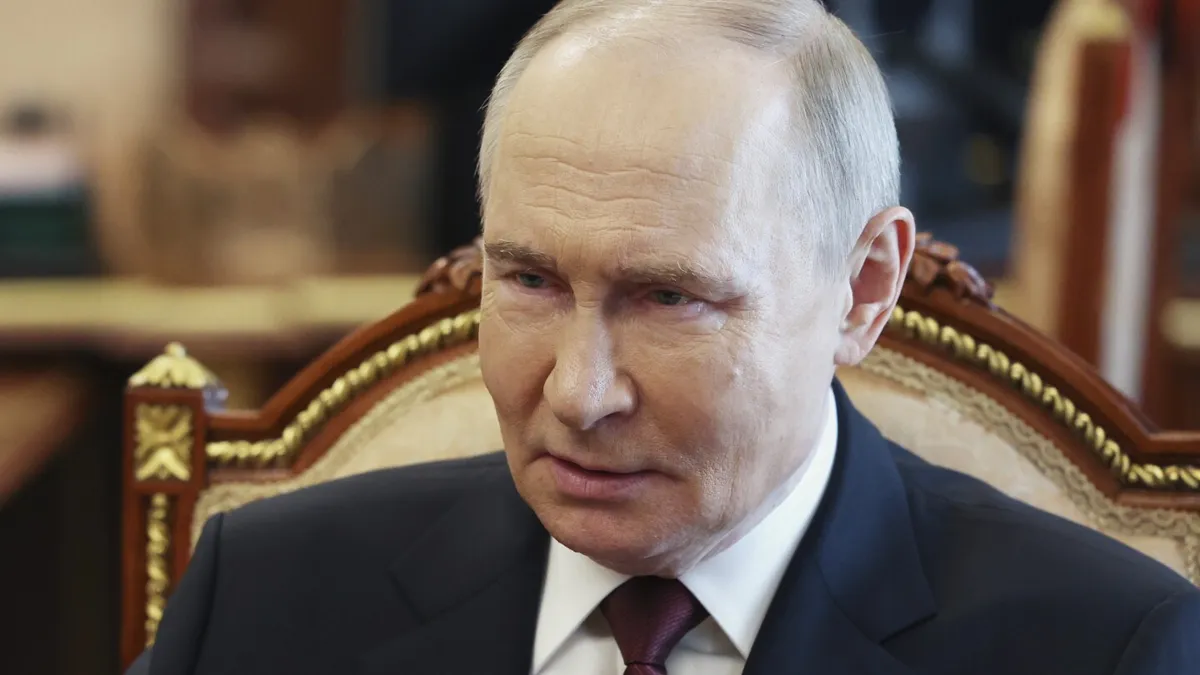
In a significant development amidst ongoing tensions, Russian President Vladimir Putin declared a temporary Easter ceasefire in Ukraine, effective from Saturday. This announcement comes as both Russia and Ukraine engaged in the largest exchange of captured soldiers since the onset of Moscow's full-scale invasion over three years ago. The ceasefire, as stated by the Kremlin, will extend from 6 p.m. Moscow time (1500 GMT) on Saturday until midnight (2100 GMT) on Easter Sunday.
During a meeting with Chief of the General Staff Valery Gerasimov, Putin expressed hope that the Ukrainian side would reciprocate the ceasefire, emphasizing the necessity for Russian troops to remain vigilant against potential violations. “We assume that the Ukrainian side will follow our example. At the same time, our troops must be ready to repel possible violations of the truce and provocations from the enemy,” Putin remarked in a video shared by the Kremlin’s Press Service.
Ukrainian President Volodymyr Zelenskyy criticized the ceasefire, labeling it as “another attempt by Putin to play with human lives.” He took to social media platform X to highlight the ongoing air raid alerts in Ukraine and the presence of Shahed drones, suggesting that these actions reveal Putin’s true intentions regarding the ceasefire and humanitarian concerns.
Reacting to the ceasefire announcement, Ukrainian Foreign Minister Andrii Sybiha noted that Kyiv had previously accepted a U.S. proposal for a full interim ceasefire lasting 30 days, which Russia had rejected. “Putin has now made statements about his alleged readiness for a ceasefire. 30 hours instead of 30 days,” Sybiha stated, also expressing skepticism about Putin's commitment to ceasefire agreements.
On the same day, both nations successfully exchanged hundreds of prisoners of war (POWs). The Russian Ministry of Defense reported that 246 Russian service members were returned from Ukrainian-controlled territory. In a gesture of goodwill, Russia transferred 31 wounded Ukrainian POWs in exchange for 15 Russian soldiers requiring urgent medical attention. Zelenskyy confirmed that 277 Ukrainian “warriors” had returned home from captivity, with both sides acknowledging the role of the United Arab Emirates in facilitating the exchange.
Putin's ceasefire announcement came on the heels of U.S. President Donald Trump's remarks about the escalation in negotiations between Ukraine and Russia. Trump insisted that neither side is “playing” him in the pursuit of an end to the prolonged conflict. His comments followed warnings from Secretary of State Marco Rubio that the U.S. might reconsider its efforts to broker a peace deal if substantial progress is not achieved soon.
In a related report, Russia's Defense Ministry claimed to have pushed Ukrainian forces out of the village of Oleshnya in the Kursk region, where previous incursions had occurred. Gerasimov stated that nearly all of the territory occupied by Ukrainian troops had been “liberated,” covering approximately 1,260 square kilometers, or 99.5% of the region. However, Zelenskyy contested this claim, asserting that Ukrainian forces are maintaining their positions in the Kursk region.
In other military developments, the Ukrainian air force reported a recent wave of Russian drone attacks, with 87 exploding drones and decoys launched overnight. Ukrainian forces managed to intercept 33 of these drones, while an additional 36 were possibly lost due to electronic jamming. Meanwhile, Russian attacks resulted in damage to farms in the Odesa region and sparked fires in the Sumy region, although no casualties were reported.
As the situation evolves, the international community remains watchful of both the ceasefire's implementation and the broader implications for peace in Ukraine.